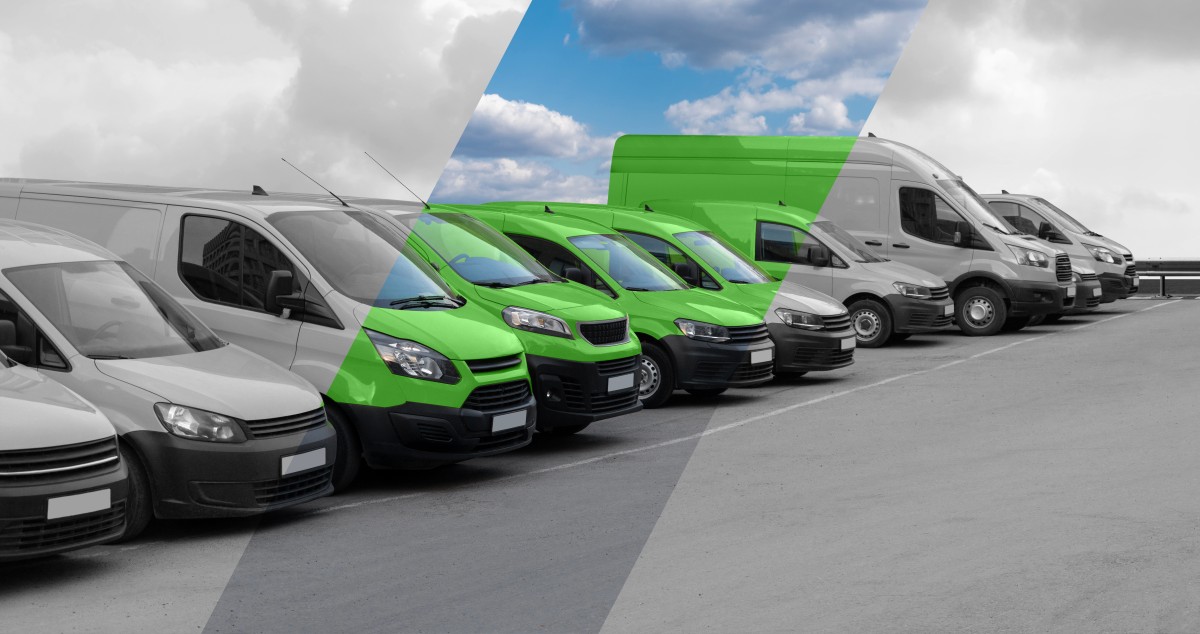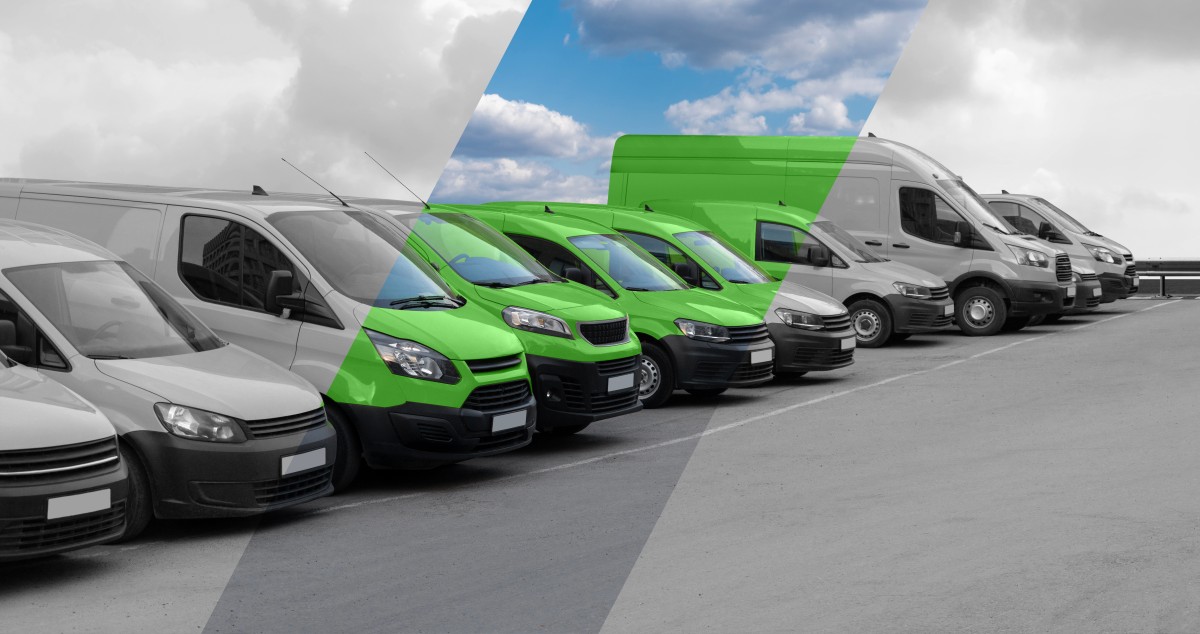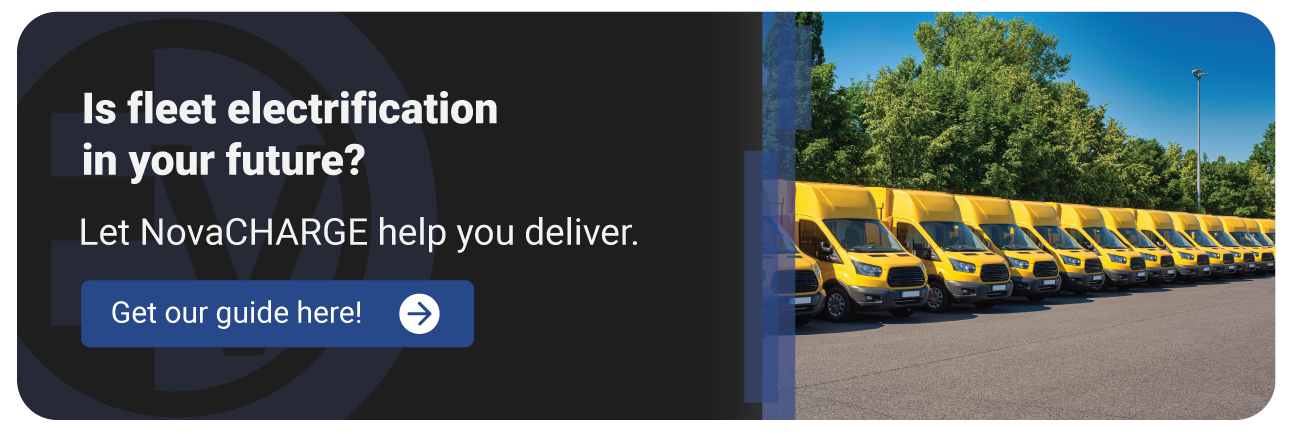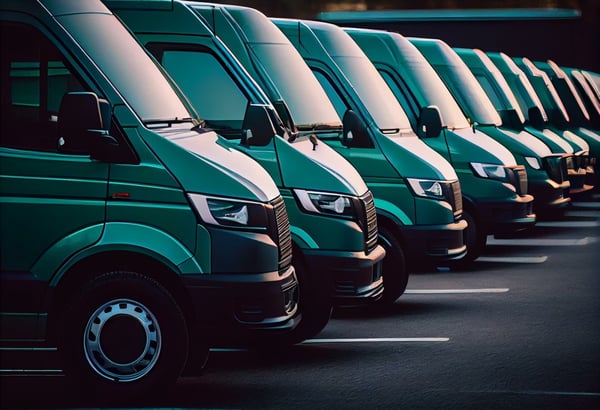Top Tips for Fleet Electrification
May 30, 2023 | 7 MIN READ
 With sustainability goals and deadlines fast approaching for many businesses and organizations, there are likely several potential solutions and initiatives on the table. What if there was a specific solution that could help you meet those goals, but also help you save money, improve efficiency, and boost your image with consumers or citizens? Fleet electrification can do that. In fact, with the right solution, one with unparalleled flexibility and transparency, you make huge gains in your sustainability goals while also improving your bottom line.
With sustainability goals and deadlines fast approaching for many businesses and organizations, there are likely several potential solutions and initiatives on the table. What if there was a specific solution that could help you meet those goals, but also help you save money, improve efficiency, and boost your image with consumers or citizens? Fleet electrification can do that. In fact, with the right solution, one with unparalleled flexibility and transparency, you make huge gains in your sustainability goals while also improving your bottom line.
Quick Links
- What is Fleet Electrification?
- What are the Challenges of Fleet Electrification?
- Benefits of Fleet Electrification
- Considering Fleet Electrification? Top Tips for Implementation
What is Fleet Electrification?
Fleet electrification is the process of converting a municipal or business fleet from combustion engine vehicles to electric vehicles. Rather than seeing this switch as an all at once prospect, we want to stress that it is a process.
Many fleet managers start with the vehicles that need replacing and gradually introduce the infrastructure needed to support a fully electric fleet. Transitions and change take time and a gradual shift allows you, and your team, to adjust to the logistics of an electric fleet.
What are the Challenges of Fleet Electrification?
While many fleet managers may be considering fleet electrification, the process can seem daunting. For some, the unknowns can seem intimidating, so let’s address those challenges head on.
Route management- For many, this seems the most complex and overwhelming aspect of fleet electrification. Fleet managers already have to plan routes and sometimes those are already complex, adding in the potential need to charge a vehicle while “in the field” adds another layer of complexity. It’s worth noting that the kind of routes EVs were designed to handle and the best use of the technology for fleets is fleets with a lot of short trips rather than anything long haul. With the right EV charging partner, you’ll learn how to leverage the charging stations at your depot and chargers within the network to keep your fleet powered up.
Charging schedules- With combustion engine vehicles, you simply gas up and get ready to go. In contrast, EVs need charge time. That means fleet managers will have to schedule and monitor both charging stations and vehicles. If something like power grid limitations means DC fast chargers are not viable for your depot, scheduling vehicles for charging time will be an essential task.
Power management- Even if DC fast charging is an option on your property, charging is still constrained by power demands. During peak demand times, which may vary depending upon your business or what’s also sharing the grid, fleet managers may need to throttle charging to accommodate other demands. Counting on a fast charging surge isn’t realistic either as that places a burden on the grid, so flexibility and planning ahead are essential. This also, of course, means you’ll need to be aware of the power infrastructure near your depot.
Depot management- Imagine being in charge of a parking lot, with very specific demands on who can park where and when. We see you fleet and depot managers and we know this doesn’t get any easier when you factor in where the charging stations are placed and which vehicles need to be so they are charged for the next trip.
Training and Administration- Any time you add in new tech, there’s a learning curve. Training your drivers and any appointed hosts on the hardware and software/apps can create challenges. In addition, your drivers will need to learn about battery/power management so they can get the most out of their battery.
In part, you’ll want to rely on your EV charging solution partner to help you determine what you’ll need and how best to manage the power available to you. This is why choosing a turnkey solution is often the best option. From site evaluation to station installation and ongoing maintenance and support, the transition to an electric fleet should be a smooth ride.
Benefits of Fleet Electrification
Given the challenges, one might wonder why moving towards fleet electrification might be a good choice. Thankfully, the benefits are significant and multi-faceted. From efficiency and cost savings to reputational boosts with both customers and employees, you can reap rewards while meeting corporate or municipal sustainability goals.
In short, the benefits of fleet electrification include:
Improved efficiency- EVs convert roughly 77% of the power they receive to energy. Combustion engines? About 12%. Simply put, it’s more bang for the buck when it comes to power conversion. They’re also more efficient on the road because they don’t waste energy while idling. That makes them a much better option for stop and go deliveries or service needs.
Lower costs- First, traditionally, energy costs are far more stable than that of fossil fuels. Gas and oil markets can be incredibly volatile meaning costs can soar making budgets unpredictable. Further, EVs require less maintenance than traditional vehicles. The main components (battery, motor) require less maintenance, but there are also fewer fluids, less wear and tear on brakes, and fewer moving parts than in a combustion engine vehicle. TCO is, plain and simple, lower for EVs than traditional vehicles.
Reputational boosts and sustainability goals- If your company or municipality has sustainability goals related to decreasing CO2 emissions then fleet electrification is a significant step with clear and obvious results. In fact, research in 2021 revealed that electric vehicles could reduce CO2 emissions by 93%. Further, when more and more consumers are working to align their values with the organizations they conduct business with, fleet electrification can improve your standing and increase the likelihood of customers choosing you.
Considering Fleet Electrification? Top Tips for Implementation
So you’re ready to consider fleet electrification but you don’t know where to start? We’ve got a few tips and tricks for you to consider when it comes to implementation.
1. Establish a plan and goals
As we mentioned above, fleet electrification is a transition and that means planning ahead to complete the project in phases rather than one fell swoop. Often, fleet managers begin by replacing either the oldest vehicles that are the biggest drain on maintenance funds or by picking the fleet vehicles that would best be suited for an EV swap. For example, if you have a specific make and model of vehicle that handles hyperlocal deliveries or service calls, then swapping those vehicles first is a great option.
Then, as with any project, determine early on what your goals are. Measuring the return on your investment means being able to track and monitor your goals. For example, if lowering costs is the primary goal, be sure you’re tracking the costs of your EVs and weighing that against the TCO of combustion engine vehicles.
For many fleet managers, business owners, and municipalities, the cost of fleet electrification is deemed prohibitive. However, the federal government’s recent push to incentivize businesses and more to make the shift means there’s money out there to help. Your EV charging solution partner should be able to help you identify the opportunities available to you.
3. Make the right connections with your utility company and local municipalitiesYour connection to your local utility company is important for two reasons. First, you need to have a good understanding of the power available to you. Your site and the closest utility infrastructure may need upgrades to be able to handle the demands created by EV charging. In addition, EV adoption and fleet electrification is really only as strong as the surrounding EV network and both your local utility and municipality will have up to date information on the strength of the existing EV infrastructure in the area.
4. Find the right EVSE partnerWhen it comes to fleet electrification, you want to work with a partner who will not only assist you through all steps of the process, but who can also leverage relationships and industry knowledge to support your transition. Similarly, you want to choose a partner who’s considered all aspects of your needs from a reliability and service perspective to how you manage your stations. That means looking closely at the charging network they provide and examining the EV charging station features offered with their solution.
At NovaCHARGE, we understand that fleet electrification is a process, much like the decision to head in that direction. That’s why our team is here and ready to help. From answering your questions to providing a solution tailor made to your specific needs and goals, we’ve got a solution for you. Reach out today and let’s get your fleet powered up!

